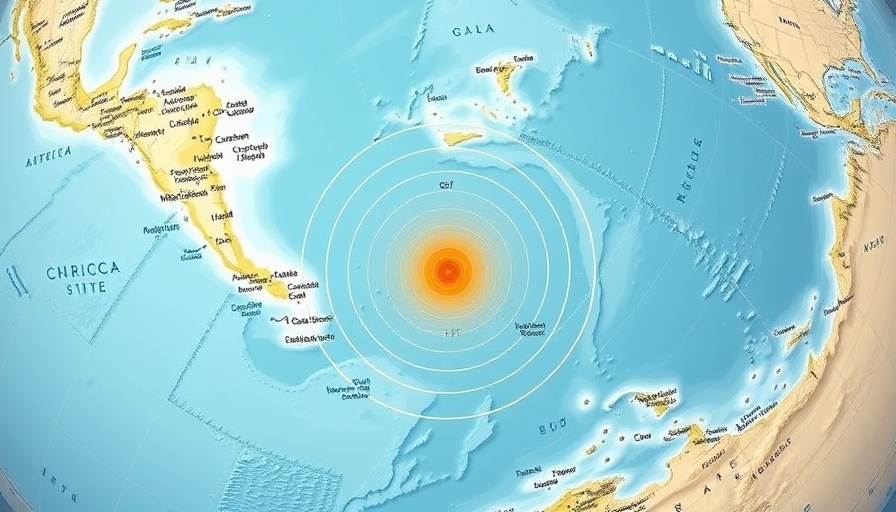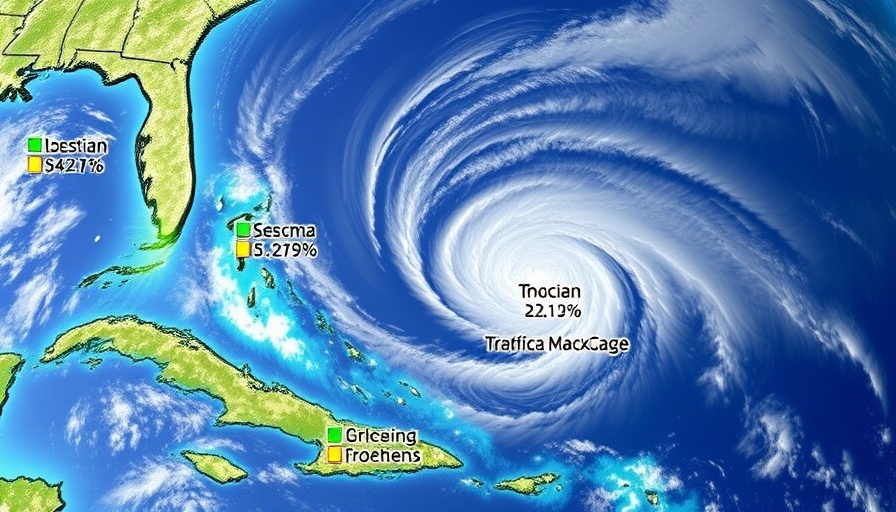
Shake-Up in the Gulf: Understanding the Recent Earthquake
On May 24, 2025, an unusual seismic event shook the waters of the Gulf of America, registering a magnitude 3.1 earthquake. Occurring at 2:41 PM local time, the quake was centered approximately 70 miles south of Gulf Shores, Alabama, at a depth of 10 km. While not causing significant destruction, this tremor has captured attention due to its rarity in the region.
Why This Earthquake Matters
Earthquakes of this magnitude are not common in the Gulf of America, which had seen no seismic activity for at least three weeks prior. Though a magnitude of 3.1 is considered weak by most standards, it was felt by several coastal residents who reported their experiences through the USGS’s "Did you feel it?" website, illustrating how even minor quakes can draw public interest and concern.
The Science Behind Earthquakes
According to insights from USGS, earthquakes below a magnitude of 2.0 go largely unnoticed by human observers. However, once they exceed this threshold, awareness increases significantly. The distinction becomes clearer with earthquakes of magnitude 5.5 and greater, which typically result in extensive damage and casualties. Since the Gulf quake remained relatively subdued, it did not lead to any tsunami alerts or infrastructure damage, reassuring both local residents and officials.
Cultural and Economic Impact on Coastal Communities
The Gulf Coast is a vital hub for fishing, tourism, and maritime activities. Events such as this may prompt discussions about safety protocols in marine and coastal contexts. For instance, while the earthquake was felt on land, the fishing industry remains a crucial economic force, serving regions from Alabama to Mexico. Fishermen could be concerned about underwater tremors affecting fish behavior, thus impacting their catch rates.
A Broader Look at Earthquakes in the Region
This relatively mild earthquake brings to light the geological characteristics of the Gulf of America. Though earthquakes are infrequent, they serve as a reminder of nature's unpredictability. Coastal residents may wonder how prepared their communities are for potential seismic events in the future, highlighting the importance of emergency preparedness and public awareness campaigns.
Engaging Communities and Creating Conversations
The response to this event is a testament to the resilience of coastal communities. As residents share their experiences, local forums can play a pivotal role in fostering dialogue about geological events, safety measures, and community responses to environmental threats. It’s essential for policymakers and local leaders to engage citizens in these discussions, emphasizing the importance of continuity and precaution in communal life.
Conclusion: What’s Next for Coastal Residents?
Although this earthquake appears to be a minor occurrence, it serves as a stark reminder of the ever-present potential for geological activity even in unexpected regions. Communities must remain observant of their environments, assess their preparedness for future quakes, and consider discussions surrounding safety and emergency response. How will residents and leaders respond to this jolt, ensuring safety and resilience for the vibrant coastal community?
 Add Row
Add Row  Add
Add 




Write A Comment